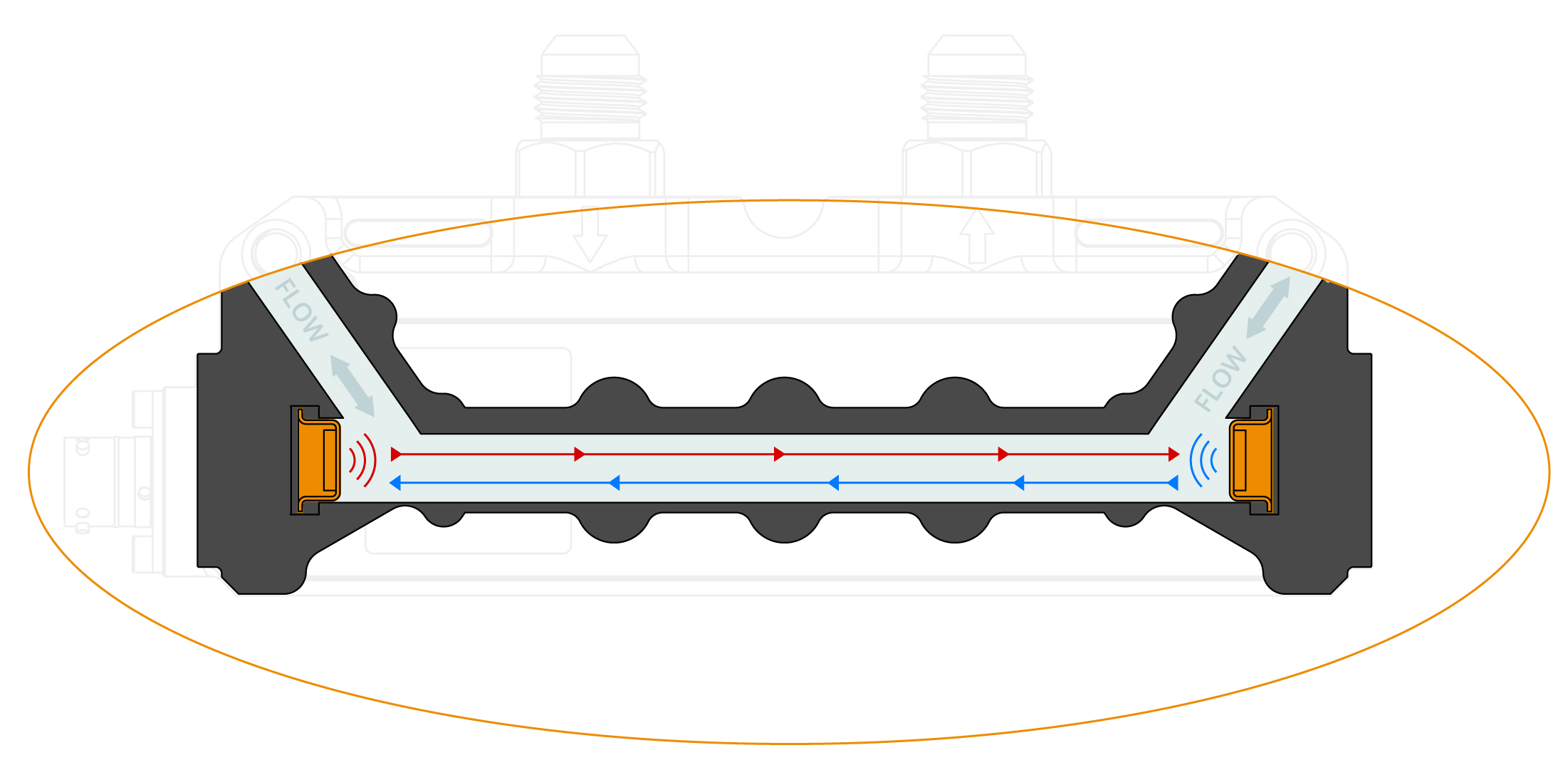How ultrasonic flow meters work, and the principles of flow measurement
Ultrasonic flow meters have been around for over half a century, providing a non-invasive way to measure liquid flow velocity with minimal moving parts. Recent advances in technology have allowed next-generation flow meters like the Sentronics Flowsonic to compete with older, more established measurement methods in dynamic environments where high accuracy is required.

The ‘time-of-flight’ measurement technique
Developed to measure fluid flow at unprecedented accuracy, Sentronics FlowSonic fuel flow meters use the ultrasonic time-of-flight principle to measure the linear velocity of fluid flowing through a straight tube of known cross-sectional area.
A short burst of ultrasound is generated by a transducer located at one end of the tube. This ultrasonic wave propagates through the fluid at a net velocity equal to the speed of sound plus the linear velocity of the fluid itself. The faster the fluid flows, the shorter the time of flight.
A short time later, an identical burst from a transducer at the other end of the tube is sent in the opposite direction, against the direction of fluid flow. In this case, the net velocity equals the speed of sound minus the linear velocity of the fluid, and the motion of the fluid causes the time of flight to increase.

The sensor measures the time of flight in each of the two directions and subtracts one from the other, giving a value which is linearly proportional to the velocity of the fluid through the tube. This value is scaled according to the known dimensions of the flow tube to give a volumetric flow rate.
To give a feel for the numbers: a flow rate of 10 g/minute in diesel fuel at 15°C gives a time difference between the two directions of just under 2 nanoseconds. Measuring this flow rate to within ±1% accuracy requires a time measurement accurate to ±20 picoseconds.
Correction factors are applied to compensate for effects such as thermal expansion of the meter housing, changes in fluid behaviour as it transitions between laminar and turbulent flow, and changes in viscosity with temperature.
High-frequency sampling
Depending on the required trade-off between accuracy, speed of response and immunity to vibration, the meter may generate anywhere between 500 and >2000 ultrasonic pulses per direction, per second. Each of these gives an instantaneous measurement of the flow velocity, allowing the instrument to detect incredibly short transient events in the flow.
In the fastest instruments, used in the high vibration environment of a racing car, pulses are sent from both ends of the flow tube at the same time in opposite directions, crossing over in the middle of the flow tube and being received near-simultaneously. This technique allows the number of measurements per second to be effectively doubled, which is beneficial to avoid errors due to aliasing.
In other applications, the number of pulses per second is reduced and pulses may be sent in only one direction at a time. This reduces the levels of background noise and other interference, and allows for an even higher degree of accuracy, especially at low flow rates.
Summary and Further Reading
Although ultrasonic measurement has been in use for several decades, Sentronics’ FlowSonic flow meters utilise state-of-the-art technological advances to take it to the next level, providing high-accuracy velocity measurement in demanding environments.
Find out more about how FlowSonic flow meters are used for fuel and coolant applications in automotive test and development applications:
Fuel Consumption Measurement
Coolant Circulation Measurement
